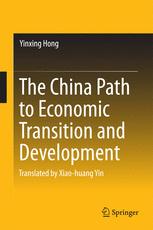

Most ebook files are in PDF format, so you can easily read them using various software such as Foxit Reader or directly on the Google Chrome browser.
Some ebook files are released by publishers in other formats such as .awz, .mobi, .epub, .fb2, etc. You may need to install specific software to read these formats on mobile/PC, such as Calibre.
Please read the tutorial at this link: https://ebookbell.com/faq
We offer FREE conversion to the popular formats you request; however, this may take some time. Therefore, right after payment, please email us, and we will try to provide the service as quickly as possible.
For some exceptional file formats or broken links (if any), please refrain from opening any disputes. Instead, email us first, and we will try to assist within a maximum of 6 hours.
EbookBell Team

5.0
80 reviewsThis book by the renowned Chinese scholar Dr. Yinxing Hong provides the reader with a perceptive analysis of what has worked in China’s development model. Over the past 30 years, China has experienced a remarkable economic rise, but it now faces the challenge of switching the drivers of this economic growth, which have proven so successful. The path has not been an easy one, and many challenges lie ahead. However, the rise of the Chinese economy has been the most significant global development in recent years. Is there a specific Chinese model? How was the Chinese transition, from a Soviet-style economic structure to one that is more open to market influences and the global market, achieved? In 15 essays, Dr. Hong provides fascinating insights to these and other key questions. The essays cover the challenges involved in transition and how the market-oriented reforms progressed; what the consequences of the transition were for public goods provision and how China opened up its economic system. The essays in Part II address the remaining challenges facing rural areas trying to develop a more consumer-driven economic base, and how to effectively modify the model of economic development. This book provides a sound basis for policymakers and scholars alike, as well as anyone who wants to get an insider’s view of the progress and challenges faced by China’s economic development.